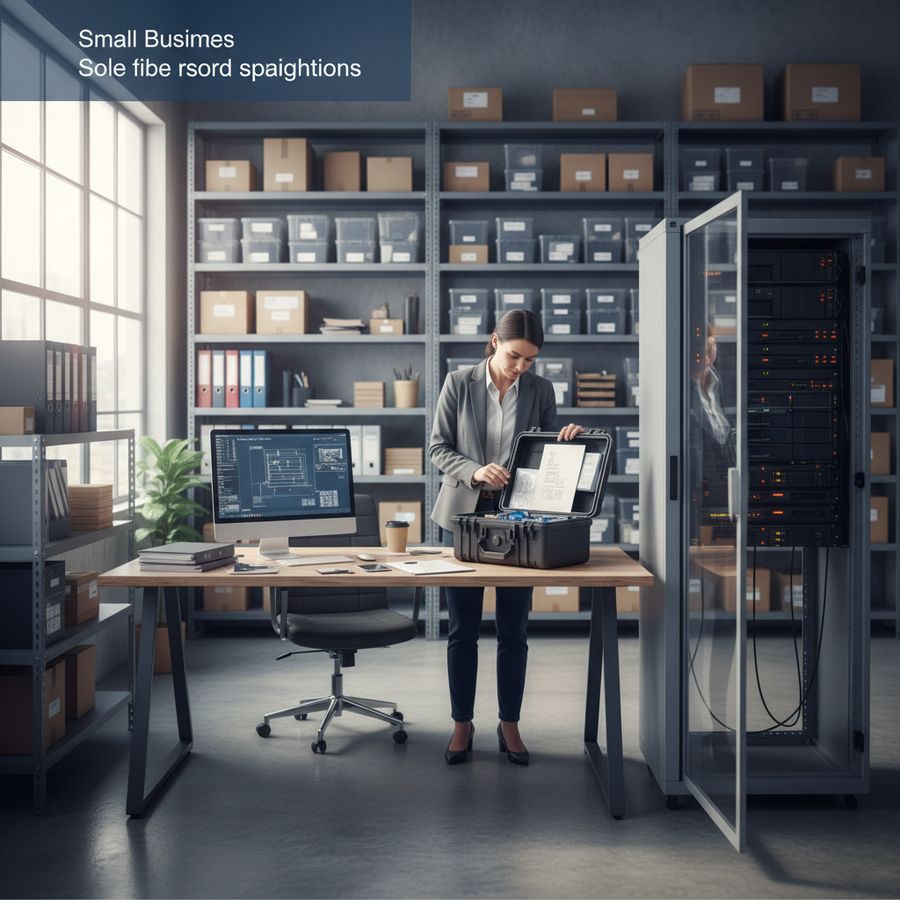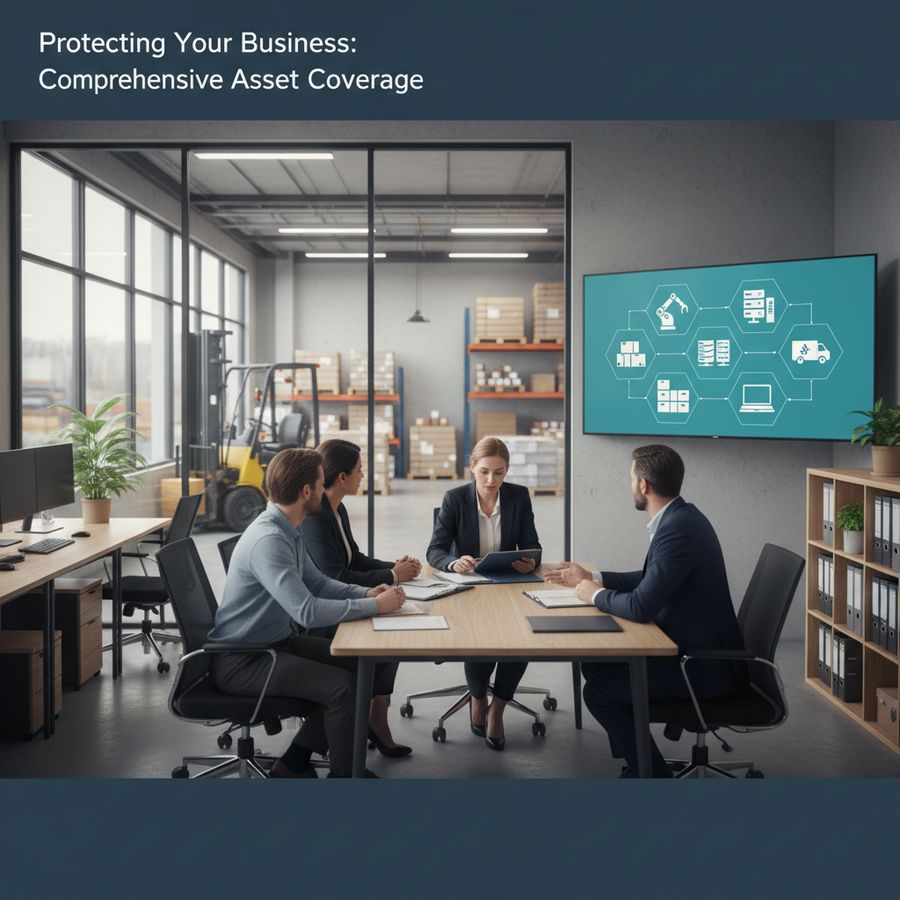How to Insure Your Sme’S Company Assets Effectively
Overview
Insuring your SME’s company assets effectively is a fundamental step in safeguarding your business against unforeseen risks. Company assets insurance offers critical protection, ensuring that your valuable physical and intangible property is covered against damage, theft, or loss. For small and medium-sized enterprises (SMEs), asset protection is not just a precaution but a necessity to maintain operational stability and financial health.
Company assets can encompass a broad range of items including buildings, machinery, inventory, office equipment, and even digital assets. Without adequate insurance, a single incident such as fire, theft, or natural disaster can severely disrupt your business operations and cause significant financial setbacks. Business property insurance is designed to mitigate these risks by providing compensation or repair services that allow your company to recover swiftly.
Understanding the importance of SME asset protection means recognizing how insurance contributes to long-term business resilience. It not only protects your tangible assets but also supports your company’s reputation and creditworthiness. Moreover, with tailored insurance solutions, you can manage risks more effectively and focus on growth without constant worry about potential losses.
“Effective company assets insurance is a cornerstone of risk management for any SME, offering peace of mind and financial security in an unpredictable world.”
In this guide, we will explore the types of company asset insurance available, how to value your assets accurately, different coverage options, strategies for risk mitigation, and navigating the claims process. By the end, you will be well-equipped to make informed decisions to protect your SME’s assets comprehensively.

Types of Company Asset Insurance
When considering company assets insurance, it’s essential to understand the various types of coverage available to tailor protection to your SME’s specific needs. The diversity in asset types means there isn’t a one-size-fits-all insurance solution.
Business property insurance is the most common category and typically covers physical assets like buildings, office equipment, furniture, and inventory against risks such as fire, theft, vandalism, and natural disasters. This insurance ensures that any damage or loss can be financially compensated, minimizing disruption.
Additional specialized insurance types include:
Inventory insurance: Protects stock and raw materials, crucial for SMEs in retail, manufacturing, or wholesale sectors.
Equipment and machinery insurance: Covers the repair or replacement of essential tools and machinery that your business depends on, such as manufacturing equipment or IT hardware.
Environmental damage insurance: Addresses risks related to pollution or contamination, which might affect your property or surroundings.
Business interruption insurance: While not a direct asset insurance, it complements asset protection by covering lost income if your business operations are halted due to insured damage.
Choosing the right mix of these insurance types depends on your industry, asset portfolio, and risk profile. For instance, a technology SME might prioritize equipment insurance, while a manufacturing SME may require comprehensive coverage for machinery and inventory.
“Selecting appropriate types of insurance tailored to your SME’s asset structure is key to ensuring full protection without unnecessary expenditure.”
Working with an experienced insurance provider can help identify the coverage categories most relevant to your business, ensuring your company assets are well protected against a wide spectrum of risks.

Valuing Your Assets
Accurate asset valuation is a critical step in securing effective SME asset protection. Underinsuring or overinsuring your company assets can both lead to financial inefficiencies—either by insufficient coverage or paying more in premiums than necessary.
Asset valuation involves determining the current worth of your physical and intangible assets to establish an appropriate insurance sum. This process typically includes:
Replacement cost value: The amount required to replace or repair the asset without deduction for depreciation.
Actual cash value: The replacement cost minus depreciation, reflecting the asset’s current market value.
Market value: The price at which an asset would sell in the open market, often relevant for resale or liquidation considerations.
For SMEs, valuing assets accurately can be challenging due to the diversity and changing nature of assets like inventory, equipment, or technology. Regularly updating asset valuations is recommended, especially when acquiring new assets or after significant business changes.
Professional appraisals or consultations with financial advisors can provide reliable valuations. Additionally, maintaining detailed records and inventories supports precise valuation and expedites claims processing in case of loss or damage.
“Proper asset valuation ensures your insurance coverage matches the true value of your company assets, avoiding costly gaps or redundant expenses.”
Investing time in understanding the worth of your assets not only streamlines insurance procurement but also strengthens your overall risk management strategy.
Coverage Options
Understanding the available coverage options is vital to customizing your company assets insurance to best fit your SME’s unique requirements. Insurance policies can vary widely in terms of what they cover, limits, deductibles, and exclusions.
Common coverage elements for business property insurance include protection against:
Fire and explosion
Theft and burglary
Natural disasters: Such as storms, floods, or earthquakes
Vandalism and malicious damage
Accidental damage
Many insurers provide customizable add-ons or riders that extend coverage, such as:
Equipment breakdown insurance: For sudden mechanical or electrical failure.
Environmental liability coverage: For pollution-related damages.
Business interruption insurance: To cover loss of income during downtime.
Cyber insurance: For protection against data breaches affecting digital assets.
Deductibles and policy limits should be carefully considered. A higher deductible usually means lower premiums but requires your business to cover more minor losses out-of-pocket. Conversely, higher coverage limits ensure protection against large-scale losses but come with increased premium costs.
“Choosing the right coverage options balances comprehensive protection with cost-effectiveness, tailored to the risks your SME faces.”
Consulting with insurance experts can help you navigate these choices and build a policy that aligns with your business objectives and budget.
Risk Mitigation
While company assets insurance provides financial protection, actively reducing the likelihood of asset damage or loss through risk mitigation strategies is equally important. Effective risk management minimizes insurance claims and can lead to premium discounts.
Key risk mitigation practices include:
Implementing security measures: Surveillance cameras, alarm systems, secure locks, and controlled access reduce theft and vandalism risks.
Regular maintenance: Keeping machinery, electrical systems, and buildings in good condition prevents breakdowns and accidents.
Employee training: Educating staff on safety protocols, emergency procedures, and proper equipment use lowers workplace incidents.
Environmental controls: Installing fire suppression systems, flood barriers, and climate control to protect sensitive assets.
Inventory management: Accurate tracking and storage practices reduce loss and damage.
Insurance providers often assess your risk mitigation efforts during underwriting. Demonstrating robust risk controls can improve your insurance terms and reduce costs.
“Proactive risk mitigation not only protects your assets but also strengthens your relationship with insurers, unlocking better coverage options and premiums.”
Integrating these strategies into your daily operations is a smart investment toward sustaining your SME’s asset integrity and financial stability.
Claims Process
Understanding the claims process for your company assets insurance ensures that, in the unfortunate event of loss or damage, your SME can recover quickly and efficiently. A streamlined claims experience minimizes downtime and financial strain.
The typical claims procedure involves several crucial steps:
Immediate notification: Inform your insurer as soon as possible after the incident, providing preliminary details.
Documentation: Collect evidence such as photos, videos, police reports (if applicable), and detailed inventories of damaged or lost assets.
Claim submission: Complete the insurer’s claim forms with accurate and thorough information.
Assessment and inspection: An adjuster may visit your premises to assess the damage and verify the claim.
Resolution and payout: Upon approval, the insurer will either reimburse costs, arrange repairs, or replace assets per your policy terms.
Maintaining comprehensive records and clear communication with your insurer throughout the process is essential. Delays or incomplete information can prolong claim resolution.
“Being prepared with proper documentation and understanding your insurer’s requirements can expedite claims and get your business back on track swiftly.”
Additionally, some insurers offer dedicated support and personal contact to guide you through the claims process, making it less stressful during challenging times.
Conclusion
Effective company assets insurance is essential for safeguarding your SME’s valuable resources and ensuring business continuity. By understanding the various types of insurance available, accurately valuing your assets, selecting tailored coverage options, and implementing risk mitigation strategies, you can greatly minimize your exposure to financial loss. To learn more about protecting your business, visit Finass Verzekert.
Moreover, being well-versed in the claims process empowers you to respond efficiently when incidents occur, minimizing disruption and recovery time. Prioritizing SME asset protection through comprehensive insurance coverage not only safeguards your physical and financial assets but also strengthens your company’s resilience and reputation.
Investing in the right insurance and risk management solutions today paves the way for a secure and prosperous business future.
Reacties
Een reactie posten